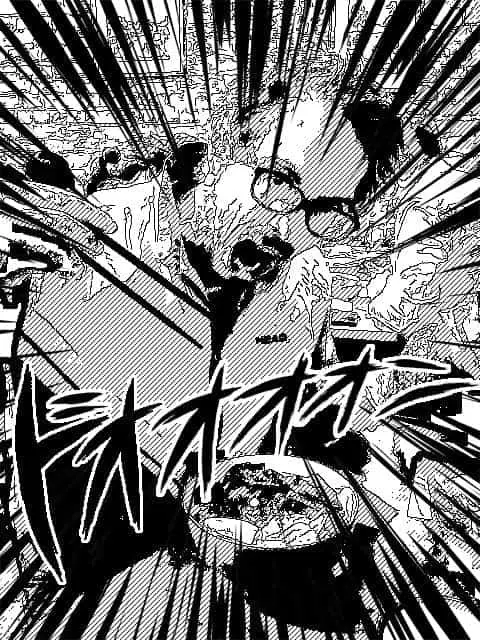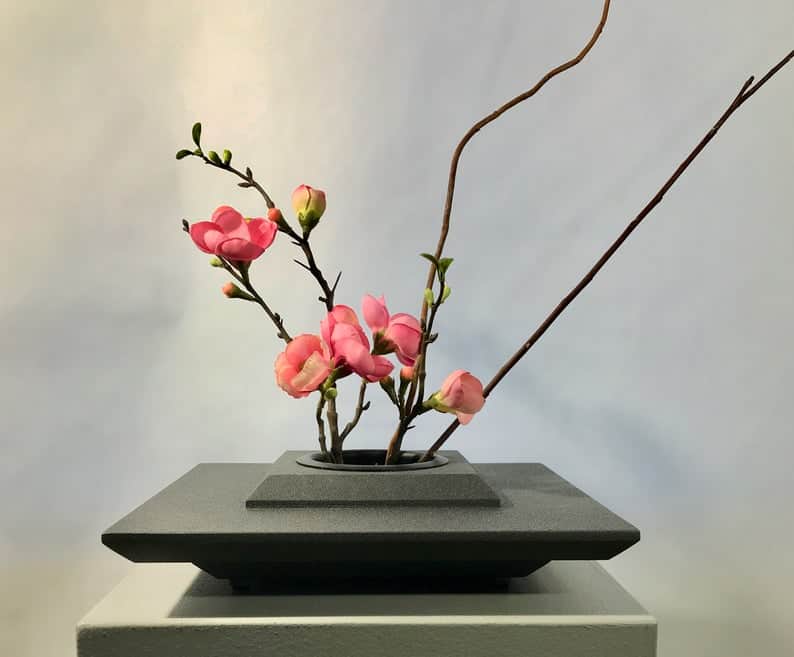Japanese Vases
花瓶
There is a big world of Japanese vases out there. There is such a long history and range of styles that is difficult to neatly categorise them in a short time.
There are a few approaches you can take:
- Think about the sort of flower & arrangement you want to display and then look by shape.
- Choose by the kind of material you want. Eg. Porcelain, Glass, Ceramic, rough, smooth, earthen, colorful.
- Choose by region. Given the bredth of Japanese pottery, the most common way to categorise ceramic goods in Japan is by region.

To simplify things, we’ve chosen ten of our favorite Japanese vases from a range of styles and regions. Rather than make a futile attempt at an exhaustive categorisation of Japanese vases, these as a representative sample of what is out there.
For an overview of our top items of Japanese Home Decor see our article here.
#1 Rough Tokoname Ware Vase
- Tokoname ware – Stoneware, and ceramics produced in and around the municipality of Tokoname, Aichi, in central Japan. Tokoname was the location of one of the Six Ancient Kilns of Japan.
- Height 12cm
- Distinctively Japanese style ideal for natural, earthy aesthetics
#2 Earthen Shigaraki Ware Vase
- Beautiful rough hewen Shigaraki – ware piece.
- Natural earthen tones
- Size Width23cm X Depth20cm X Height19.5cm
#3 Colorful Kutani Porcelain Vase
- Exquisite Kutani porcelain ware item.
- Style was popular with European aristocracy
- Striking colorful motif on white
- Features crane motif – symbol associated with long life.
- 18 x 31cm.
#4 Modern Shigaraki Ware Vase
- Outstanding modern twist on traditional Shigaraki Ware techniques
- Luscious green glaze using Kinsai technique
- Size Width21cm X Depth21cm X Height24.5cm
#5 Flat Square Large Ikebana Vase
- Suits “Ikebana” flower arrangement practitioner
- large 11″ square tiered Ikebana vase.
- Constructed of composite engineered wood painted with stone pebble finish in grey.
- Large 4″ dia. water cup included
#6 Slim Hagiyaki Gohonte Vase
- This tall, thin vase uses the gohonte 御本手 technique.
- Gohonte makes a feature of the pinkish blemishes that happen as a result of the firing process
- Hand made piece – each one unique
- Size width10cm X depth10cm X height24cm
#7 Classic Satsuma Peacock Vase
- Satsuma vases were hugely popular items in the west from the 19th century
- Peacock is popular motif symbolising the deity Kannon associated with kindness and good health
- 18 inch
- Rich colored item
#8 Minimalist Bizen Vase
- Minimal, timeless design
- Earthen feel with metallic tones
- Characterstic Bizen Ware piece
- W 12cm x 12cm, H 27 cm.
#9 Refined Arita Porcelain Vase
- Hand made
- ARITA-yaki / IMARI-yaki: Imari-yaki is a porcelain made in Arita region of former Hizen Province (today’s Saga Prefecture) in Kyushu, Japan.
- Originally known as Arita-yaki, named after its production region, it became to be known as Imari-yaki when the porcelain was exported to Europe in the 17th century from Imari port, Saga. Ko-imari, literally old imari in Japanese, refers specifically to Imari ware produced in the Edo period (17th-19th century). Today the name Arita-yaki is distinguished from Imari-yaki: porcelain made in Arita is called Arita-yaki and in Imari as Imari-yaki.
- DIAMETER: – BODY: L12 × H24.5 × W12 cm – BOX: L15 × H27 × W14 cm
- MATERIAL: Porcelain
#10 Maple Wood Ikebana Vase
- Would suit serious Ikebana enthusiast
- Spalted Maple Wood & Vase Insert Heavy Cast Metal Frog
- 7.5 x 7.5 x 2 Inch
- Gallery Quality Vase Holds Water for Fresh Flowers, Dry Flowers or Tea Candle
You may also be interested in:
Japanoscope is a registered affiliate with several online shops and may receive a commission when you click on some of the links within content.

Contributor
Hi, I’m Peter. I lived in Japan for four years as a University student completing a Masters Degree in Musicology. I have succesfully completed the highest level of the Japanese Language Proficiency Test (N1). I have toured the country six times playing music and singing songs in Japanese and English.

